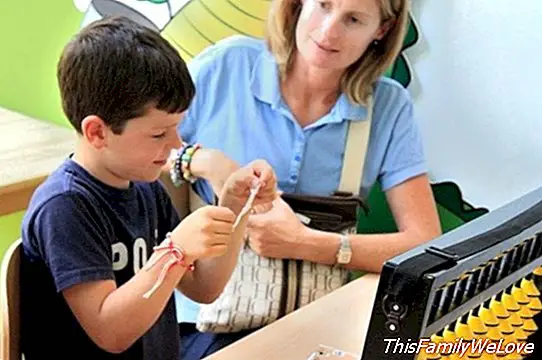The cognitive benefits of the abacus for children

The abacus is an instrument of millenary calculation of Japanese origin, which is considered the precursor of modern calculators. Now a Spanish study has corroborated the Cognitive benefits of the abacus for children, since it allows them to visualize that there are different ways to reach the same results and Thanks to the abacus, children learn to reason.
The traditional Japanese abacus is a wooden structure formed by parallel bars in which a moving ball is placed and allows the results of simple arithmetic operations to be found. Currently, in Spain more and more schools are following this method of calculation taught by UCMAS (Universal Concept of the Mental Arithmetic System) which was established in Spain in 2008 and, since then, more than 200 schools, both public and private, rely on this learning program with abacus. More than 10,000 students take this method.
An alternative for children with ADHD and dyscalculia
Several studies have shown the cognitive benefits of the use of mental abacus as a method for teaching mathematics and has been proposed as an alternative for children with ADHD and dyscalculia (difficulties in the ability to learn mathematics). Why? Because the fingers end in the number 10 and with the abacus the children can visualize the number 12 too, and not imagine it in an abstract way as we do in the West. This is the advantage that oriental children have, who score better on the PISA math tests.
Now, a study, prepared by Emilio López-Navarro, Guido Corradi, Jaume Roselló and Enric Munar, from the University of the Balearic Islands, whose objective was to analyze the differences in arithmetic performance and cognitive flexibility in children of 12 years who have received The conventional teaching of mathematics and children who have been taught the use of the mental abacus for mathematical calculation has shown that the abacus is an essential tool with which children obtain cognitive benefits.
Conclusions of the cognitive benefits of the abacus
The results showed significant differences in favor of the UCMAS students in the tests carried out. These results suggest that the mental abacus is a promising tool in the teaching of mathematics and that it can be an alternative to conventional teaching from which children with ADHD or dyscalculia can benefit.
Emilio López-Navarro, Guido Corradi, Jaume Roselló and Enric Munar, from the University of the Balearic Islands, presented their conclusions in the VIII International Congress and XIII National of Clinical Psychology celebrated in Granada.
Methodology of the study on the abacus
To carry out the study, a sample of 121 children of 6th grade of Primary Education was chosen. Among those who were recruited, 54 had received training in the use of mental abacus as an arithmetic method. The training was provided by the Spanish division of UCMAS and consisted of two group sessions throughout the academic year carried out during after-school hours.
Regarding the method of the abacus, it should be noted that at the beginning, children learn to add, multiply, subtract or divide on the physical abacus to pass to the mental or imaginary abacus. The method improves the concentration capacity of children. The age range to start using the millenary abacus is between 5 and 13 years.
Marisol Nuevo Espin




